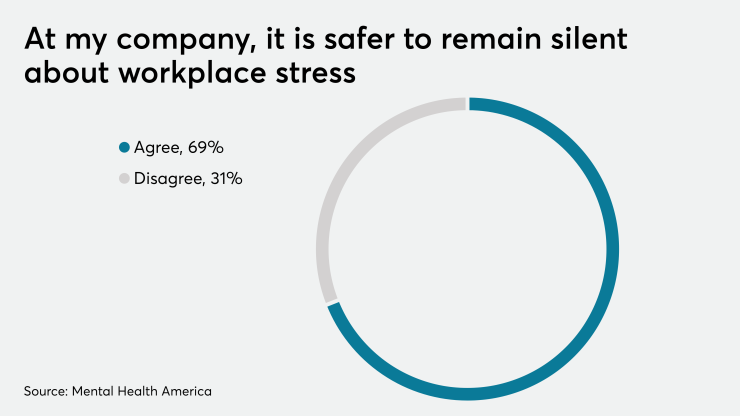Given what’s happening with COVID-19 domestically and internationally, today’s workplace is looking much different than it did even weeks or days ago. It’s a stressful time for everyone and the costs associated with stress in the workplace and mental health issues among employees continue to add up—in a big way. It’s estimated that workplace stress now costs employers $500 billion annually in the form of decreased performance at work or absenteeism, but those figures were calculated before the spread of COVID-19.
When employee attendance and performance decline, income typically declines, too (unfortunately, especially true for hourly employees), which, in turn, negatively impacts their financial health and overall wellbeing. In fact, one of the biggest financial stressors for many employees is the cost of health care. Consider these data points:
- Over half of Americans (54 percent)
say they’ve delayed medical care for themselves in the last year because they couldn’t afford it. On top of that, nearly a quarter of Americans have delayed medical care for over a year due to financial issues. - Mental health conditions are unfortunately no exception; in fact, they’re even worse: every year,
57 percent of adults suffering from mental illness don’t get treatment. - While employees’ wellbeing is suffering, it’s also taking a toll on their productivity. The National Alliance on Mental Health
estimates that untreated mental illness costs the United States up to $193 billion every year in lost productivity.
We know employees are stressed or may have mental illnesses. We know they are worried about health care expenses. And, all that worrying and stress takes a heavy toll on their physical health. Poor mental health increases employees’ risk for chronic physical conditions, too. Those chronic physical conditions can also take a toll on your mental health. It’s a vicious and overwhelming cycle.
Enter the modern-day employer. Today’s companies, more than ever, are in a position to positively impact employees’ mental health. As attitudes and acceptance of mental health challenges continue to evolve, employers can play a key role in their employees’ continued emotional wellbeing by providing benefits that support mental health care.
What do these evolving benefits look like? Some progressive companies are starting to serve and support employees and their unique mental health needs in different ways, using a number of different voluntary benefits:
- Hospital indemnity insurance. Some hospital indemnity plans will include a benefit rarely covered in most plans — mental wellness and addiction recovery support. This kind of added benefit, like Trustmark’s Hospital StayPay plan, truly shows employees their employer cares. On top of that, hospital indemnity insurance provides employees choice and control over their coverage to avoid gaps in their medical coverage and help cover deductibles. The idea? This benefit can help calm worries and fears about health care coverage that often lead to workplace stress and, eventually, larger mental health issues.
- Disability insurance — redefined. When it comes to disability insurance, one of the issues and concerns we’ve heard from employees and customers over the years is that these plans should cover mental illness and substance abuse. Some new disability policies are starting to address that concern. These new plans offer no reduction in benefits, lifetime maximum or separate benefit period, and treat these illnesses like any other claim.
- Wellness programs. Improved physical health can positively impact your mental health. From higher self-esteem to more energy and a more positive outlook, being physically healthy generally makes people happier. In turn, these positive mental traits promote a healthier lifestyle. Wellness programs can help address the physical side, while, in some cases offering coaching and resources to help cope with stress and improve mental health.
All this leads to a discussion that centers on rethinking benefit plans as “health hubs” that take a holistic approach to employee health and factor in multiple dimensions of their wellbeing, including, of course, their mental wellbeing.






